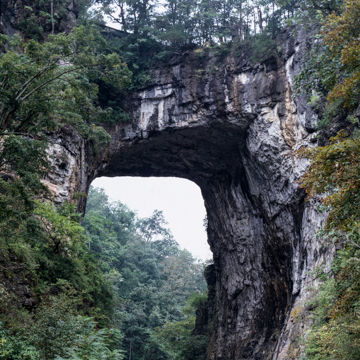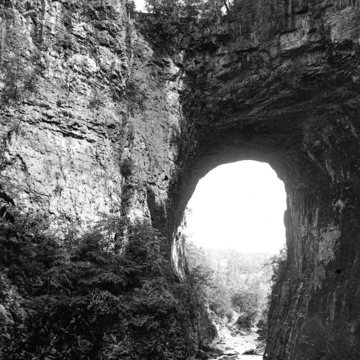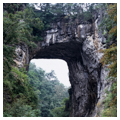Surveyed by George Washington in 1750, owned by Thomas Jefferson in 1774, and visited by Henry Clay, James Monroe, Daniel Boone, and countless others, the 215-foot-tall natural arch of limestone carved out by Cedar Creek gave Rockbridge County its name. The bridge became an object of tourist travel in the eighteenth century and was recorded by explorers as well as by later artists and historians. Frederick Church painted it and William Cullen Bryant wrote about it. The first hotel to serve tourists visiting the bridge was built in 1815, another appeared in 1829, and several more followed. The present large, brick, Colonial Revival building with its central, pedimented portico and galleried wings dates from 1947 and is part of a group of tourist cabins, gift shops, recreational facilities, and entertainment enterprises that now greet visitors. The caverns, discovered in the late nineteenth century and opened to the public in 1977, are thirty-four stories deep. The bridge and the caverns attract thousands of tourists each year.
You are here
The Natural Bridge and Caverns
If SAH Archipedia has been useful to you, please consider supporting it.
SAH Archipedia tells the story of the United States through its buildings, landscapes, and cities. This freely available resource empowers the public with authoritative knowledge that deepens their understanding and appreciation of the built environment. But the Society of Architectural Historians, which created SAH Archipedia with University of Virginia Press, needs your support to maintain the high-caliber research, writing, photography, cartography, editing, design, and programming that make SAH Archipedia a trusted online resource available to all who value the history of place, heritage tourism, and learning.
















